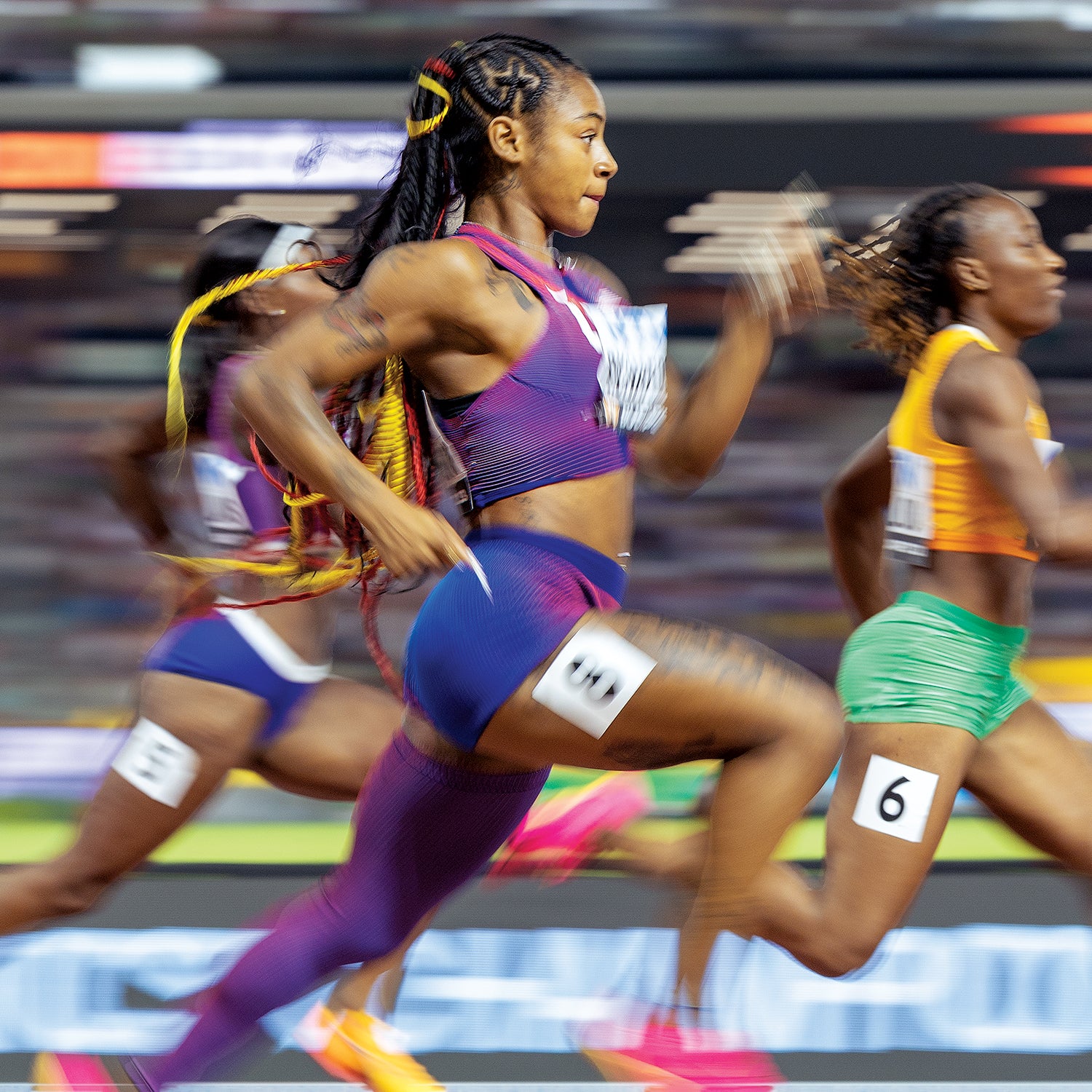In 2011, two years after his book Born to Run launched the barefoot boom, Christopher McDougall offered a clarification. “The ‘one best way’ isn’t about footwear,” he wrote in The New York Times Magazine. “It’s about [running] form.” Rather than simply ditching their shoes, people needed to learn how to run better. No one, after all, assumes that we’re born knowing the best method of swinging a tennis racket; we need to be taught technique. Why should running be any different? There was a problem, though: no one could agree on what the ideal running form looked like, or even what elements mattered. Research was needed, and scientists around the world got busy.
The results of those studies have been trickling in ever since, but with findings that are often hard to interpret and sometimes contradictory. In search of clarity, a team of leading biomechanics researchers from around the world decided to pool the existing data. They focused on running economy—a measure of efficiency, like gas mileage for a car, that quantifies how much energy you burn to maintain a given pace. The results, published earlier this year in the journal Sports Medicine, offer a few clues about how we might run better. But they also raise a question: Is there really “one best way” to run?
The Latest Findings on Running Form
The new meta-analysis was led by Bas Van Hooren, a sports scientist at Maastricht University in the Netherlands and an elite runner with a 10K best of 28:41 and a half-marathon best of 63:34. He and his colleagues gathered data from 51 studies involving more than 1,000 participants in total, searching for patterns. Most notable was what they �徱���’t find. Stride length wasn’t associated with economy; neither was ankle, knee, or hip angle, ground contact time, peak vertical forces, or muscle activation patterns, as measured by electrodes. Contrary to what McDougall and many others assumed, heel striking appeared to be no better or worse than landing on your midfoot or forefoot.
The analysis did find a small but statistically significant link between faster cadence—how many steps you take per minute—and better economy. This suggests that using a metronome or running with music at a tempo slightly faster than the athlete’s usual cadence might improve economy for some, though the idea is endlessly debated. Less vertical bounce and legs that function like stiffer “springs” also seemed to help, traits that can be cultivated with explosive plyometric exercises. In his own training, Van Hooren incorporates exercises like skips, drop jumps, and ankle hops. “People say my running form is nice, so it might have helped,” he says, “but of course it can also be due to other factors.”
The Ideal Running Form May not Exist
Still, the overarching picture is that the elements of a running stride that we can measure have little influence on how efficient that stride is. You might counter that great running form is like the famous Supreme Court definition of obscenity: we know it when we see it. Alas, the evidence doesn’t support that claim either. A few years ago, researchers from Tennessee State University sent video clips of five runners to 121 coaches and asked them to rank the athletes in order of economy. The coaches failed completely at ranking the runners accurately, regardless of their experience and specialized training levels.
Contrary to what many assumed, heel striking appeared to be no better or worse than landing on your midfoot or forefoot.
The interesting question is why so much research has yielded so few new insights. “I don’t think there has been a lot of change in the key messages,” says Isabel Moore, a researcher at Cardiff Metropolitan University who coauthored the new analysis and also conducted the last major review on the topic back in 2016. At this point, it’s not necessarily a lack of data that’s the problem. Instead, it may be that the human body is simply too variable: people have different shapes, sizes, limb proportions, and developmental histories, so each person’s ideal stride is unique. “I don’t think there will be an identifiable ‘good form’ that fits everyone,” Moore says.
Rodger Kram, a veteran biomechanics researcher at the University of Colorado whose work is cited multiple times in the new review, is also skeptical that more studies will bring greater clarity. “Teasing apart the links between running economy and biomechanics is a very difficult enigma, and group averages don’t seem to be the way to go,” he says. “Otherwise we would have solved the problem back in 1980.”
Injury Prevention Has to Be Considered as Well
We may also be optimizing form for factors other than efficiency. Saving energy makes you faster, but avoiding injury is a higher priority for many runners. The strides we adopt may be tuned in part by an instinct to avoid overloading individual muscles or tendons, which would blur the relationship between biomechanics and running economy. And trying to micromanage elements of your stride has a cost: several studies have found that the mere act of focusing on form, instead of letting your mind wander, makes your running economy worse by a few percent—the equivalent of running in outdated sneakers instead of the latest super shoes.
So should we even try to run better? “I would say it’s something to consider,” Van Hooren says, “but not the primary factor, as most people will self-optimize with sufficient training.” That’s a key point: one research finding that’s rock-solid is that we get more efficient with experience. Strategies like plyometrics might speed up that self-optimization, but it’s not clear that you end up with ideal form. In that sense, Ed Whitlock, the smooth-striding, high-mileage-running masters marathon legend who ran 2:54 at age 73, might’ve had the right idea. I once heard him speak at a panel discussion on the science of running before the Toronto Waterfront Marathon. A series of experts sounded off on questions about diet, optimal training, and, inevitably, form. Whitlock’s stride remained fluid and powerful even into his eighties, so we waited eagerly for him to chime in. The secret, he said, was simple: “I just run.”
For more Sweat Science, join me on�������Ի���, sign up for the��, and check out my book��.


